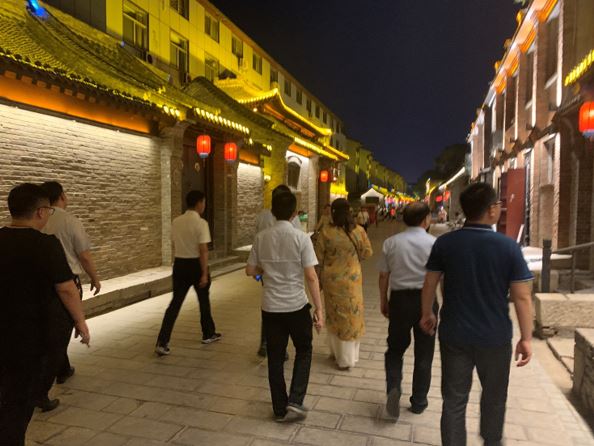For researchers interested in religious studies, this contribution presents a creative journey into the digital space when the pandemic thwarted plans for entering into the ‘natural’ field. I discovered a new perspective to look at ‘religion’ while taking ‘cognitive ethnographic’ into the digital sphere, writes Neha Khetrapal
_______________________________________________
This blogpost is a musing about the development of research methods based on my digitised fieldwork journey that I undertook in the beginning of 2021. At the dawn of 2021, I was ecstatically packing my bags to move from Hungary to India. I was overtly celebrating my transition from a postdoctoral researcher to an Assistant Professor and was also content with my personal settlement about the privately-constructed thought that the pandemic was nearly a thing of the past. All that preparation entailed a great deal of planning. And, I was also committed to shifting research gears.
In the months before the culmination of 2020, I immersed myself in the extensive reading of cognitive science of religion. With my background in cognitive science paired with a personal interest in religion, this direction appeared as a logical extension for the next leg of my academic journey. Reading more about religion, I realised that adopting a cognitive perspective could help overcome the declining popularity of religious studies. The realisation was in place along with a detailed description of the future plans. It was decided that I would move beyond adopting a strict cognitivist approach by integrating emotional and perceptual processes for examining the relations between people, gods and religious rituals. Commensurate with the goals, ethnographic fieldwork was the most viable research methodology.
To my dismay, the planned research had to be put on hold in the light of infection rates in India. The new job not only came with personal challenges associated with the geographical movement but also with the required adjustments that had to be done at the research front. Clinging onto the kindled fascination for the cognitive science of religion, I digitally ventured into a different terrain. The digital space offered scope for developing ‘cognitive ethnography’ as a method for exploring the set questions (e.g. Whitehouse, 2017).

The Methods
Ethnographic methods for collecting data are at the core of ‘cognitive ethnography’. However, the term ‘cognitive’ entails bringing the lab-based study of human cognitive processing and representations to the field. On the next level, ‘cognitive ethnography’ involves studying these cognitive representations and processes as distributed across social groups, rituals and cultural artefacts. Some may be inclined to label this methodological umbrella as ‘cognitively informed ethnography’. Irrespective of the nomenclature, the challenge was to work out further particulars: how to put ‘cognitive ethnography’ to work in the digital sphere? A stepping stone was to analyse relevant pictures in a socially contextualised manner. For instance, while collecting pictures of deities from different regions, one may ask whether the ‘same’ deity may be depicted differently based on the surrounding cultural context. As simple as this exercise may appear, there were several issues that had to be addressed along the way. Key among them was the worry that analysing pictures, albeit contextually, may give way to analysis that was either purely speculative or descriptive in nature.
In order to provide a handle to the puzzle, I teamed up with my intern. Through mutual discussions with the intern as well as other peers, it became apparent that the proposed methodological endeavour required an iterative approach that combined both qualitative and quantitative methods. While the studies within the domain of cognitive science of religion may have progressed by taking advantage of the hypothetico-deductive method, cognitive ethnography in the digital space could fuel research if the qualitative part is used for generating testable hypotheses that are later put to test by pooling in published data from a variety of domains i.e., sociology, politics and archaeology. As an example, if the question of interest is that people’s views of gods have changed over human history then one may just need to choose a deity of interest and collect pictures of the deity from several decades to be able to comment. Qualitative efforts, such as these, could add descriptive richness for the issue at hand.
At the next level, one might be interested to explain the factors that may have been responsible for the ‘visual transformation of deities’. This step requires recourse to correlational or experimental strategies. One may begin by hypothesising that ecological stress may have played a key role. Putting this hypothesis to test, a researcher could look for ecological data on disasters, severity of warfare or spread of diseases from different decades and correlate these to the changing visual depictions of deities across regions or across time spans (e.g. Caluori et al, 2020). On the other hand, equivalent efforts in the lab within the realm of cognitive science of religion would involve experimentally manipulating or simulating ecological stress and measuring consequent endorsements of people’s harsh religious beliefs (e.g. Jackson et al., 2021) or preference for ‘overtly’ harsh godly images.

The Research Question
Settling the methodology was a task in this regard, which led to the refinement of research questions as well; an objective that was consistent with the prevailing circumstances. The broad question about the nature of relations between people, god and rituals had to be abandoned in favour of a more specific question. Consistently, my intern and I asked whether devotees may construct punitive images of deities during ecological stress as a means of addressing theological and emotional tensions. We further reasoned that this potency could be moderated by polytheistic traditions. In our attempt to address these questions, we looked for data and images of deities that became popular during the spread of diseases in polytheistic and monotheistic societies. The analysis showed that several deities did gain prominence as a result of pandemics or epidemics, including, COVID-19. However, the significance of the deities declined with improvements in medical science and sanitation.
Steps Forward
Looking at the future, one is likely to ask if the nature of ‘cognitive ethnography’ might change with the access to the ‘natural’ field or whether the methodology may remain restricted to the digital space. As the writer, I am inclined to say that the scope for ‘cognitive ethnography’ will ultimately be dependent upon the kind of questions asked. Whichever way we go, disciplinary and methodological integration will help ensure research vigour. So far, ethnographers and cognitive scientists have successfully been documenting and explaining the cultural practices or rituals that have persisted for years. Efforts are needed to explain the cultural practices or rituals that have died out or would fade away with time. Similar attempts would also be indispensable for deciphering cultural artefacts that are at the fringes of societal attention. ‘Cognitive ethnography’ is a promising tool to study religion and societies from a new perspective.
References
Caluori, N., Jackson, J. C., Gray, K., & Gelfand, M. (2020). Conflict changes how people view God.
Psychological Science, 31(3), 280-292.
Jackson, J. C., Caluori, N., Abrams, S., Beckman, E., Gelfand, M., & Gray, K. (2021). Tight
Cultures and Vengeful Gods: How Culture Shapes Religious Belief. Journal of Experimental
Psychology: General. doi: 10.1037/xge0001033.
Whitehouse, H. (2017). Towards an integration of ethnography, history and the cognitive science
of religion. In Ritual (pp. 207-220). Routledge.
______________________________________________
About the research
For researchers interested in religious studies, the contribution presents a creative journey into the digital space when the pandemic thwarted plans for entering into the ‘natural’ field. The researcher discovered a new perspective to look at ‘religion’ while taking ‘cognitive ethnographic’ into the digital sphere.
For citation: Khetrapal, N. (2021) Digitising ethnography for work: the case for a Cognitive Ethnography of Religion. Field Research Methods Lab at LSE (21 July) Blog entry. URL: https://blogs.lse.ac.uk/fieldresearch/2021/07/21/digitising-ethnography
*The cover image is by and copyright of the Author.






Wonderful work and very inspiring
thanks! I am glad that you found this inspiring.